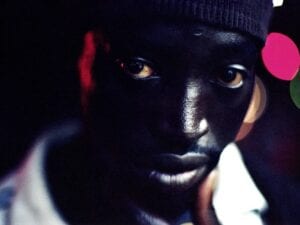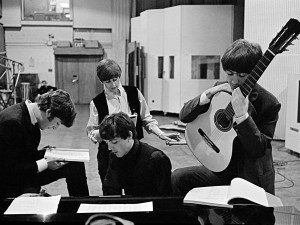Born in Belgium in 1941, Harry Gruyaert was one of the first European photographers to embrace the potential of colour, echoing American counterparts such as William Eggleston and Stephen Shore, who rejected the notion of colour as a vehicle for commercial work rather than artistic expression. Gruyaert also set himself against the humanistic European tradition of Henri Cartier-Bresson (whose legendary Magnum photographic agency he would join in 1981) in which people took precedence over the details of setting and background.
Though best known for his use of Kodachrome colour film – making use of a signature sense of light and composition – the artist is also considered for the lesser-known aspects of his career in a broad overview at FOMU. The retrospective offers a valuable insight into an individual who has historically revealed little about his wider creative process and has dismissed the idea of narrative or story in an image, instead being concerned with the aesthetics of shapes and light.
Gruyaert’s career has seen him travel the world, seeking beauty in the everyday, with some of the best-known pieces emerging from India, Morocco and Egypt as well as the west of Ireland; images taken in Morocco attained the Kodak Prize in 1976 and led to the photobook Morocco (1990). The photographer’s poetic language is evidenced in three series throughout the show. Rivages (2003) incorporates images of the horizon and the sea, whilst East/West (2017) opposes the colour palettes of Moscow in 1989, still an austere and restrained place on the eve of the fall of the Soviet Union, with the glitz and light of Las Vegas and Los Angeles in 1981.
TV Shots (1974), which Gruyaert considers his most journalistic piece of work, is also reimagined at FOMU, in the form of a video installation. For this, the artist took screen shots of unfolding global events as they were broadcast to living rooms around the world on the cathode ray tube televisions of the 1970s, some approaching abstraction in their distorted, blurred presentation, or suggesting Pop Art in their vividly colourful approach to the everyday. From the Apollo Moon landings to the hostage crisis during the 1972 Munich Olympics, these images reflect how world-shaping news stories were experienced by most people, presented alongside the banal output of TV entertainment. The work created controversy when first exhibited in 1974, when it was seen as both a disrespectful assault on the culture of television and a radical challenge to the conventions of serious press photography.
Also explored at FOMU are less well-known aspects of Gruyaert’s practice, including early black-and-white pieces, a fashion campaign for Hermès, covers for the Penguin pocket editions of Georges Simenon, a homage to filmmaker Michelangelo Antonioni, family photos and a diverse selection of commissioned work, contributing to a comprehensive summary which offers to shed new light on this acclaimed figure.
At Fotomuseum Antwerp until 10 June. For more information, click here.
Credits:
1. USA, California, Los Angeles, 1982. © Harry Gruyaert / Magnum Photos.





